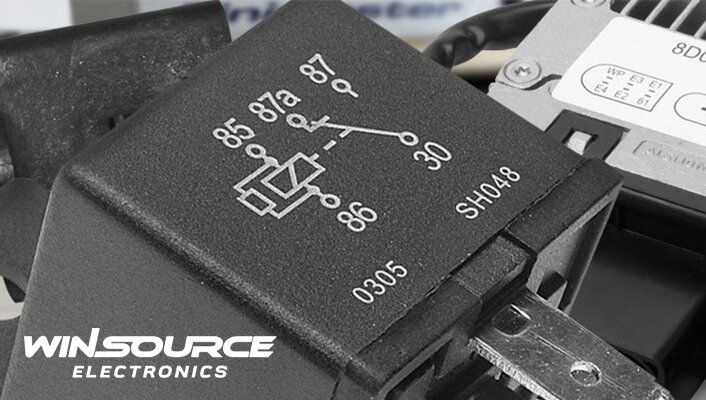
In the field of electrical control, the humble AC relay plays a pivotal role. These small but indispensable devices act as the gatekeepers of a circuit, allowing or interrupting the flow of electricity with precision and reliability. In this article, we will briefly introduce the basic principles of AC relays and explore their diverse applications in various industries.
Table of Contents
ToggleLearn about AC relays
AC (alternating current) relays are electromagnetic switches that operate in response to changes in current, voltage, or both. They consist of a coil and a set of contacts. When an AC voltage is applied to the coil, it creates a magnetic field, which in turn exerts a force on the contacts, causing them to close or open. AC relays come in a variety of configurations, but they all have the same basic operating principle.
The function of AC relay
Switch control: AC relays are mainly used for switching circuits. They can handle a wide range of currents and voltages, making them versatile components for controlling lights, motors, heaters and other electrical equipment. The ability to control these devices remotely or automatically makes AC relays vital in modern automation systems.
Protection: AC relays play a vital role in protecting electrical equipment from overload and faults. For example, an overcurrent relay can detect excessive current and break the circuit to prevent damage. Likewise, undervoltage and overvoltage relays help maintain stable voltage levels and protect sensitive equipment.
Sequencing: In complex electrical systems, such as industrial machinery or HVAC systems, AC relays are used for sequencing control. They ensure that various components operate in a specific order or under specific conditions. This sequencing increases the efficiency and safety of these systems.
Interlocking: AC relays are often used in interlocking mechanisms to prevent unsafe operating conditions. For example, in elevators, relays can ensure that the doors are fully closed before the elevator moves, thereby increasing passenger safety.
Applications of AC relays
Home Automation: AC relays are an integral part of home automation systems. They can operate lights, fans and appliances remotely, providing convenience and saving energy. Additionally, they can act as a safety mechanism, shutting down power to a specific circuit in the event of a fault.
Industrial Automation: In manufacturing and industrial environments, AC relays control a variety of processes. From conveyors to robotic arms, relays ensure machines operate as expected, improving efficiency and product quality.
Power Distribution: AC relays are used in power distribution systems to control the flow of electricity. They help manage the distribution of electricity in the grid, rerouting it in the event of a failure to minimize downtime and prevent widespread blackouts.
HVAC Systems: Heating, ventilation, and air conditioning (HVAC) systems rely on AC relays for temperature control and fan operation. They ensure that the required climatic conditions are effectively maintained.
Transportation: AC relays are vital in transportation systems, from controlling traffic lights to managing train signals and trolley switches. They help maintain the safety and efficiency of transportation networks.
In conclusion
AC relays may seem inconspicuous, but their importance in electrical control cannot be overstated. These electromagnetic switches are key to countless applications, from basic home automation to complex industrial processes and critical safety systems. As technology advances, AC relays will continue to evolve, improving their accuracy, reliability, and adaptability in ever-expanding electrical control scenarios.

COMMENTS